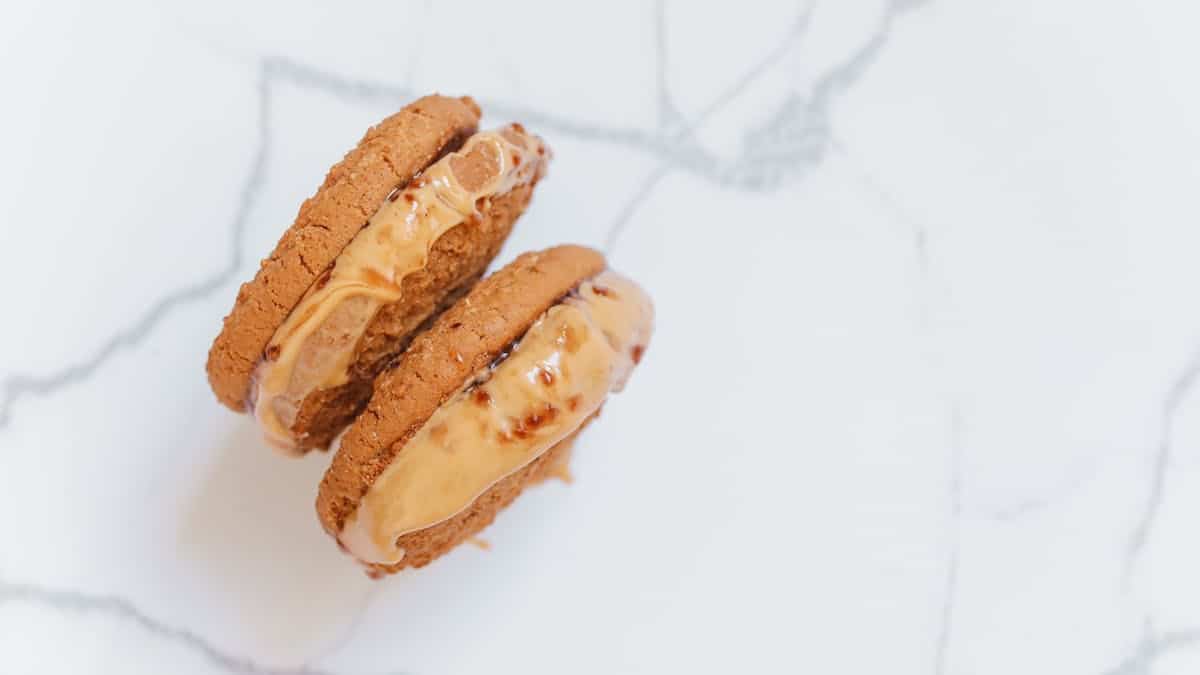Here is your complete guide to peanut butter wafers.
Introduction to Peanut Butter Wafers
Peanut butter wafers are a delightful snack that combines the rich, creamy flavor of peanut butter with the light, crispy texture of wafers. These treats have gained immense popularity for their versatility, making them suitable for various occasions—from casual snacking to elegant desserts. In this article, we will explore the history of peanut butter wafers, the ingredients that make them special, how to make them at home, and much more.
Not only are peanut butter wafers delicious, but they also offer some health benefits thanks to the nutritious properties of peanut butter. Packed with protein, healthy fats, and essential vitamins, they can be a satisfying addition to your diet when enjoyed in moderation.
Join us as we dive into the world of peanut butter wafers, exploring their origins, recipes, variations, and serving suggestions!
History of Peanut Butter Wafers
Origins of Peanut Butter
Peanut butter has a rich history that dates back to ancient civilizations in South America, where peanuts were cultivated and consumed. However, it wasn’t until the late 19th century that peanut butter became popular in the United States. The first patent for a process to make peanut butter was granted in 1884 to Marcellus Gilmore Edson.As peanut butter gained popularity, it began to be incorporated into various snacks and desserts. The combination of peanut butter with wafers emerged as a tasty treat that appealed to both children and adults.
Evolution of Wafers
Wafers themselves have a long history as well. They are believed to have originated in Europe during the Middle Ages, where they were made using simple ingredients like flour and water. Over time, they evolved into the sweet snacks we know today.The introduction of peanut wafers brought together two beloved foods—peanut butter and wafers—creating a unique snack that has stood the test of time. Today, they can be found in many forms, from commercially produced varieties to homemade versions.
Ingredients Used
Creating delicious peanut wafers starts with understanding the key ingredients involved. Here’s a breakdown:
Base Ingredients
- Peanut Butter: The star ingredient that provides flavor and creaminess.
- Flour: All-purpose flour is commonly used as the base for the wafer.
- Sugar: Adds sweetness; granulated sugar is typically preferred.
- Eggs: Help bind the ingredients together and add richness.
Optional Ingredients
To elevate your peanut wafers, consider adding some optional ingredients:
- Chocolate: Melted chocolate can be drizzled on top or used for dipping.
- Nuts: Chopped peanuts or other nuts can add crunch.
- Flavorings: Vanilla extract or other flavorings can enhance taste.
How to Make Peanut Butter Wafers
Making peanut wafers at home is easier than you might think! Here’s a step-by-step recipe:
Step-by-Step Recipe
Ingredients
| Ingredient | Amount |
|---|---|
| Peanut Butter | 1 cup |
| All-Purpose Flour | 2 cups |
| Granulated Sugar | 1 cup |
| Eggs | 2 |
| Baking Powder | 1 teaspoon |
| Vanilla Extract | 1 teaspoon |
Instructions
- Preheat Your Oven
Preheat your oven to 350°F (175°C) and line a baking sheet with parchment paper. - Mix Dry Ingredients
In a bowl, whisk together flour, sugar, and baking powder. - Combine Wet Ingredients
In another bowl, mix peanut butter, eggs, and vanilla extract until smooth. - Combine Mixtures
Gradually add the dry mixture to the wet mixture until well combined. - Shape Wafers
Using a spoon or cookie scoop, drop spoonfuls of dough onto the prepared baking sheet, spacing them about 2 inches apart. - Bake
Bake for 10-12 minutes or until edges are golden brown. - Cool
Allow wafers to cool on the baking sheet for a few minutes before transferring them to a wire rack to cool completely.
Tips for Perfect Wafers
- Use room temperature ingredients for better mixing.
- Don’t overmix; combine just until incorporated.
- For crispier wafers, bake them slightly longer but watch closely to prevent burning.
Baking Techniques
| Technique | Description |
|---|---|
| Temperature Control | Maintain an even oven temperature for uniform baking. |
| Cooling Methods | Allowing wafers to cool on a wire rack prevents sogginess. |
Variations of Peanut Butter Wafers
While traditional peanut wafers are delicious on their own, there are many exciting variations you can try:
Chocolate-Dipped Peanut Butter Wafers
Dip cooled wafers in melted chocolate for an indulgent treat. Allow excess chocolate to drip off before placing them on parchment paper to set.
Nutty Peanut Butter Wafers
Add chopped nuts like almonds or hazelnuts into the dough for extra crunch and flavor.
Vegan Peanut Butter Wafers
Substitute eggs with flaxseed meal mixed with water (1 tablespoon flaxseed meal + 2.5 tablespoons water = 1 egg). Use maple syrup instead of granulated sugar for sweetness.
Pairing Suggestions
To enhance your experience with peanut wafers, consider these pairing suggestions:
Best Beverages to Pair With Peanut Wafers
- Milk: Classic pairing; complements the creamy texture.
- Coffee: The bitterness balances out the sweetness.
- Tea: Herbal teas can provide a refreshing contrast.
Serving Ideas
- Serve with fresh fruit like bananas or strawberries.
- Drizzle with honey or maple syrup for added sweetness.
- Create a dessert platter by combining with other snacks like cookies or brownies.
Nutritional Information
Understanding the nutritional content of peanut wafers is essential for those mindful of their diet. Here’s a comparison table:
| Nutrient | Peanut Butter Wafers (per serving) | Other Snacks (per serving) |
|---|---|---|
| Calories | 150 | 200 |
| Total Fat | 8g | 10g |
| Protein | 4g | 2g |
| Sugars | 6g | 8g |
Common Mistakes to Avoid
When it comes to baking peanut wafers, even seasoned bakers can face challenges. Here are some common mistakes to avoid to ensure your wafers turn out perfectly every time.
Using Low-Quality Ingredients
One of the most significant mistakes is using low-quality ingredients. Subpar peanut butter or wafers can negatively impact the taste and texture of your cookies. Always opt for high-quality, natural peanut butter without added sugars or oils to achieve the best flavor.
Skipping the Chilling Step
Another common mistake is skipping the chilling step in the recipe. Chilling the dough helps solidify the fats, which can prevent your wafers from spreading too much during baking. If you skip this step, you may end up with cookies that are too soft and prone to falling apart.
Overloading the Filling
While it might be tempting to add extra filling to your peanut wafers, overloading can lead to messy and difficult-to-handle cookies. Stick to the recommended amounts in your recipe for a balanced treat.
Not Monitoring Oven Temperature
Incorrect oven temperature is a frequent issue that can lead to uneven baking. Ensure your oven is preheated accurately and consider using an oven thermometer for precise readings. This helps prevent overbaking or underbaking your peanut wafers.
Overmixing the Dough
Overmixing can lead to tough cookies instead of the desired tenderness. Mix just until combined to maintain a light texture. Remember, gentle mixing techniques are essential for achieving that perfect balance of chewiness and softness.
Misreading Measurements
Misreading measurements is another common pitfall. Precision in measuring ingredients is crucial for baking success. Take your time to read the recipe carefully and double-check quantities before adding ingredients.
By avoiding these common mistakes, you can ensure a smooth baking experience and create delicious peanut wafers that everyone will love!
FAQs about Peanut Butter Wafers
Here are some frequently asked questions regarding peanut butter wafers:
What is the best type of peanut butter to use?
Natural peanut butter without added sugars or oils is recommended for health benefits and flavor.
Read Also: Chicken and Cheese Jalousie Recipe.
Can I make peanut butter wafers gluten-free?
Yes! Substitute all-purpose flour with gluten-free flour blends for a gluten-free version.
Read Also: Philly Cream Cheese Nutrition.
How should I store peanut butter wafers?
Store in an airtight container at room temperature for up to one week or refrigerate for longer freshness.
Read Also: Sugar Free Vanilla Wafers.
How long do peanut butter wafers last?
They typically last about one week at room temperature; refrigerating can extend their life up to two weeks.
Read Also: Waffles and Strawberries.
Can I freeze peanut butter wafers?
Absolutely! Place cooled wafers in an airtight container or freezer bag and freeze for up to three months.
Read Also: Brown Rice Pasta.
Conclusion
In conclusion, peanut butter wafers are not just a tasty snack; they embody versatility and creativity in baking. Whether you enjoy them plain or experiment with various flavors and pairings, these delightful treats are sure to please anyone who tries them.
Read Also: Mushroom Soup Receip Probiotic.
We encourage you to try making your own peanut wafers at home using our detailed recipe and tips! With their rich history and endless possibilities for customization, these snacks will surely become a favorite in your household. Enjoy your baking adventure!
Read Also: Cheeseburger Macaroni Soup.
References and Resources Used in This Article:
- Irresistible Peanut Butter Cookies | Jif
- Peanut Butter Cookies Recipe – Preppy Kitchen
- Peanut Butter Cookies | Lonumedhu
- Super Easy Peanut Butter Cookies Recipe – Allrecipes
- Peanut Butter Wafers Recipe | Food Network
- Chocolate and Peanut Butter Wafers | Akis Petretzikis
- Joey’s Peanut Butter Cookies Recipe – Allrecipes

